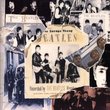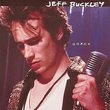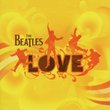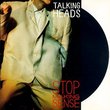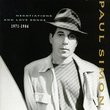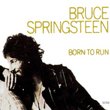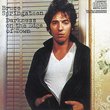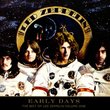| All Artists: The Beatles Title: Let It Be... Naked Members Wishing: 0 Total Copies: 0 Label: Capitol Original Release Date: 1/1/2003 Re-Release Date: 11/18/2003 Genres: Rock, Classic Rock Styles: British Invasion, Album-Oriented Rock (AOR), Supergroups Number of Discs: 2 SwapaCD Credits: 2 UPCs: 724359571324, 4988006817081, 724359522746 |
Search - The Beatles :: Let It Be... Naked
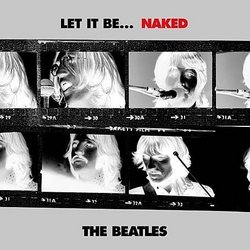 | The Beatles Let It Be... Naked Genres: Rock, Classic Rock
Japanese edition of 2003 album contains the same amount of tracks as all other two disc versions but includes a bonus Japanese booklet & obi-strip. EMI. |
Larger Image |
CD DetailsSynopsis
Album Description Japanese edition of 2003 album contains the same amount of tracks as all other two disc versions but includes a bonus Japanese booklet & obi-strip. EMI. Similarly Requested CDs
|
Member CD ReviewsReviewed on 8/7/2006... This CD takes the already wonderful Let It Be and strips away some of the orchestration and leaves a very raw, beautiful, I think the way the Beatles would like it album.
CD ReviewsGreat marketing campaign, disappointing album David Goodwin | Westchester, NY United States | 11/18/2003 (2 out of 5 stars) "With the release of "Let It Be...Naked," I think it's finally clear that Apple has lost it. They have no idea what Beatles fans--let alone the general public--might want. To Apple, all Beatles releases are events, and all must therefore be marketed to the be-all and end-all.Let's look at what "Let It Be...Naked" purports to be. The old "Let It Be" album is certainly one of the most controversial entities in the Beatles' catalogue. Recorded largely before "Abbey Road" but released afterwards, the sessions for what would become Let It Be were extraordinarily contentious, plagued by conflicting egos, drug use, apathy, and all sorts of negativity. The original plan--which was to film rehearsals for an eventual live concert--was largely scrapped; the live concert idea, originally posited as taking place before a huge audience in a famous location, ended up being given on the roof of Apple studios. Yet music for the project *was* recorded, after all, so the band set out trying to make an album out of the mess. A few sample compilations of the album were created (and, indeed, were played on radio stations at the time), but barring the Get Back/Don't Let Me Down and Let It Be singles, nothing was used at that time. Eventually, however, the project was passed off to Phil Spector, who set about creating an album from the mess, but who also overdubbed something approximating his legendary "wall of sound" onto a few cuts. It is for this reason, ostensibly, that "Let It Be...Naked" exists."Let It Be...Naked" purports to be the Let It Be album as the Beatles originally intended, stripped of its Phil Spector excess...and...uh, well, reordered, I suppose. Paul McCartney has been complaining for *years* about Spector's treatment of his "The Long and Winding Road" (and indeed cited that as "sabotague" in some of his earlier breaking-up-the-band lawsuits).So is "Let It Be...Naked" the album that was originally intended? Probably not. The Beatles didn't *know* what they wanted, which is precisely why they kept farming the material out. "Let It Be...Naked" is revisionism, which is hardly a bad thing, but it'd be nice to be up front about it.But that's the thing: "Let It Be...Naked" is barely revisionism at all, because it simply *isn't very different* from Let It Be. Spector's overindulgence was limited to exactly three tracks: I Me Mine, The Long and Winding Road, and Across the Universe. Sparse versions of the first two were made available on Anthology 3. Granted, the versions available here are different, but hardly to a revelatory extent. The album has been reordered, with two of the slighter tracks ("Maggie Mae" and "Dig It") being dumped in favor of "Don't Let Me Down." Additionally, the between-song chatter that marked the original has been eliminated as well. And despite the kicking-him-when-he's-down denigration of Spector's treatment of the album (does anybody else think the timing of this, what with Spector's legal problems, is particularly unpleasant?), his template of the album is clearly still fresh, as "I Me Mine" retains its edit-for-length and "Dig a Pony" removes the same music.What does this mean? Sure, it presents a few alternate takes, but "Let It Be...Naked" really doesn't sound all that different. It isn't revelatory in the slightest--thanks largely to Anthology 3--and its use of alternate takes for some tracks feels like a "why bother?" endeavor; they simply aren't changed enough to feel like anything new. Even worse, the "Naked" and "as nature intended" implications are flat out false, as many of the new takes are glorified "out-fakes" created by editing together and creatively remixing takes (the title track is an excellent example, with parts of several versions composited into a whole). The back of "Let It Be...Naked" mentions that the bonus CD (which, thankfully, doesn't seem to add to the cost) provides a "unique insight into the recording of the album." This is untrue to a hilarious extent, unless quickly-edited snippets of dialogue and music appeal to you. Folks, this stuff has been bootlegged for *thirty years* now, something that Apple seems to be in denial about. Disc 2 could've been a sparkling version of the rooftop concert, or some of the better performances from the rehearsals; instead, it's a focusless, single-track mess that I doubt anybody will listen to more than once. All of this could be forgiven, I guess, if "Let It Be...Naked" sounded stellar. It had the chance to, after all; it was remixed from the multitracks. Unfortunately, "Let It Be...Naked" just sounds *different*. The use of no-noise processing leaves several tracks feeling very artificial, with Ringo's drums sounding particularly anemic on several cuts. Not terrible, but certainly not what it could have been.My verdict: "Let It Be...Naked" is a cheap buy, but is hardly what could have been, and is almost definitely not "naked" or "the album the Beatles intended." It feels at its core like an inconsequential throwaway, a quick lark of revisionism being marketed as a major artistic reclamation of a lost work...a lost work which, it should be noted, rarely ranks as a fan favorite. To hear Apple's marketing campaign, "Let It Be...Naked" is unprecedented and revelatory, a great artistic statement worthy of a celebrity roundtable discussion (I mean...what's next? "Beatles for Sale...Naked?" With Leave My Kitten Alone instead of Mr. Moonlight and Honey Don't deleted because Ringo never liked it? With comments from Fiona Apple about how it's really her favorite album?). It isn't.Is it worth buying? I guess. It's cheap (currently), and it provides an interesting alternative to an album that most Beatles fans are undoubtedly fairly familiar with. Just set your expectations accordingly, and try to ignore the fact that Apple decided that *this* was more relevant than a well-transferred, mono/stereo hybrid reissue program to replace those mediocre 1987 Beatles discs we've been stuck with for so long." One more go at it MurrayTheCat | upstate New York | 08/18/2004 (5 out of 5 stars) "The Beatles rejected the GET BACK album upon its completion in 1969 and again in 1970. The project (renamed LET IT BE) then got the Phil Spector treatment, with Paul being kept completely in the dark about it. Many have called the Spector album shoddy, but most Beatles fans bought it and enjoyed it despite the consensus that it was not top-notch.
At one time The Beatles were capable of producing much magic "live" in the studio--and they had done it often. But after they quit touring, the lack of playing together eventually took its toll, John admitting that "The Beatles musically weren't as together in the last few years." John also said that these sessions had "lousy feeling." But within the album notes to this new release, marketing mentality strikes once again and, rather typically, attempts to put a spin on these "raw and unadorned" sessions, saying that this is what the group wanted. "Raw and unadorned" shouldn't be confused with "careless and crude." The latter two are not what the group was shooting for, but a fair amount of that made it onto the tapes because of their lack of desire to focus on making music. (Just a few months later they did focus on making music and produced ABBEY ROAD!) I still look at LET IT BE as a compilation of rehearsals; little of it sounds finished. Though the songs themselves are great, the performances are not, for the most part, of the highest Beatles standard. Sure, there are many magical moments throughout; but the magic is fleeting, and we are continually reminded of a great producer's absence--George Martin! These recordings are culled from sessions that, had the proper commitment been there, should have produced a remarkable Beatles album along the lines of what we were accustomed to. Each attempt at presenting these sessions only leaves me wondering what could have been if George Martin had been allowed to fully produce them. That said, here's what we get this time around: "Get Back" is noticeably cleaner than the previous releases. But this version fades out quickly before Paul's "ooo-oo," leaving it sounding truncated--annoyingly unresolved. Overall, I still prefer the 1969-single version with its very satisfying ending, the version we fans thrilled to for a full year before the Spector LP appeared. The electric piano in "Dig A Pony" is more prominent here; otherwise, there is not much difference between this account and Spector's. "For You Blue" reveals little difference as well. "The Long And Winding Road" is a different take from Spector's, and, as another reviewer astutely points out, we get lots of rehearsal-like "plinky dink" playing, unworthy of a finished Beatles song. It is typical for musicians to play with this type of uncertainty when the arrangement is still in the building stage, and here the uncertain piano fills don't carry the song's emotion between Paul's vocal lines. The tempo surges at times, and this whole take is pretty much a rough run-through. Though the combination of orchestra and choir on Spector's version periodically strikes me as being unnatural, I never thought that it transported the song to the world of Mantovani. In fact, I never realized just how much I love the Spector account until I sat and compared these two versions at length. "Two Of Us" reveals no significant variation except that it fades out before the guitars stop and before John's whistling goes charmingly out of tune, present on the Spector version. We are given a different rendition of "I've Got A Feeling." It is not quite as hot, matching neither the emotion in the vocals nor the intensity and drive of the performance Spector chose for his album. I also like Preston's piano line better on the Spector track. Top honors go to NAKED for the better mix of "One After 909." The song really comes alive here. One very consequential difference is that Ringo's bass drum has punch on NAKED; on the Spector it's pure mud. The added punch gives the song an infectious--even delirious--drive that it never had before. Unfortunately, the fade at the end is quick so as not to catch the live atmosphere. This take of "Don't Let Me Down" is rehearsal quality all the way; it pales in every respect compared with the glorious single version released in 1969. On Spector's "I Me Mine," the strings are heard where, on this new mix, the organ pops through more noticeably. And here, "Across The Universe" is back to its original speed. Though the Spector treatment sounds neither preferable nor wrong (John certainly liked it), this NAKED one sounds, well, naked. I still prefer the original version found on PAST MASTERS VOLUME TWO. That one sounds closer to the John of early 1968 who made bizarre requests of George Martin, wanting a song "to sound like an orange" and such. Finally, this remix of the title track brings the organ up front more, we miss the electric piano on the first walk-down before the guitar solo, and the brass is gone. The new version also omits the third-verse edit found in the Spector version. But this mix bewilders me: Is it substantive and worthwhile? Or is it a run-of-the-mill account, one more from a potentially endless parade of remixes? George's guitar solo is different yet again. So what? If you ask me, the single version (found on PAST MASTERS VOLUME TWO and the SINGLES boxed set) still says it best. Though I still prefer Spector's LET IT BE, I cannot recommend it over this cleaned-up version to all listeners. Each has strengths; neither is perfect. The album notes assert that this edition reveals how the album was meant to be. Didn't the Spector album make the same assertion? So much for promises. " |

 Track Listings (11) - Disc #1
Track Listings (11) - Disc #1